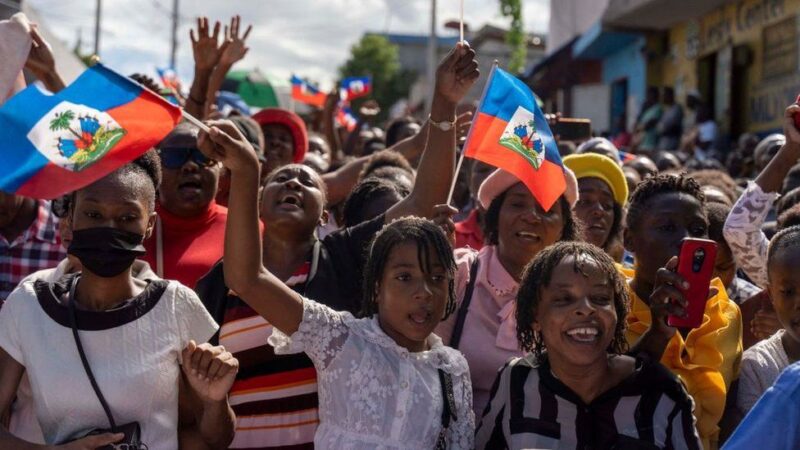Haiti is a country that often finds itself in the headlines for its challenges, but there is so much more to this Caribbean nation than meets the eye. From its rich history to its vibrant culture, it is a land of complexity and beauty.
Today we’ll talk about 20 fascinating facts about Haiti that will give you a whole new perspective of this unique country.
1. It Is The First Independent Black Republic
Haiti holds the distinction of being the first black republic in the world, gaining its independence from France on January 1, 1804. This monumental achievement has had a lasting impact on the global struggle for freedom and equality.
The Haitian Revolution
The Haitian Revolution (1791-1804) was a pivotal event not just for the country but for the world. It was the only successful slave revolt in history that led to the founding of a new nation.
Led by figures like Toussaint L’Ouverture and Jean-Jacques Dessalines, the revolution was a complex and brutal struggle that eventually saw the defeat of French colonial forces.
Global Impact
The success of the revolution had a profound impact on slave societies and colonial powers around the world. It inspired freedom movements in Latin America and gave hope to enslaved people in the United States and other parts of the world.
The revolution also led to the Louisiana Purchase, as France lost a valuable colony and sold its American territories to the United States.
2. The Origin of the Name “Haiti”
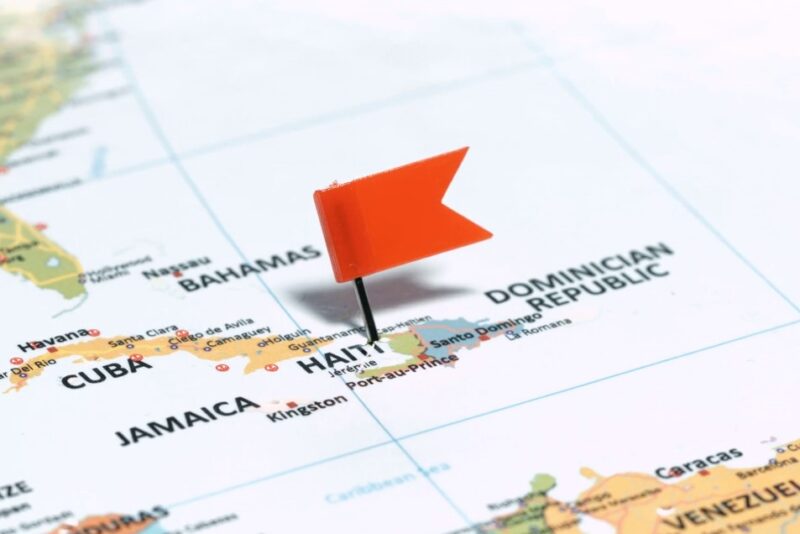
The name “Haiti” is derived from the indigenous Taíno language. The Taíno people were the original inhabitants of the island, which they called “Ayiti,” meaning “Land of High Mountains.”
Taíno Influence
Before the arrival of Christopher Columbus in 1492, the island was inhabited by the Taíno people. They were part of the Arawak group that originated from South America and settled in the Caribbean.
The Taíno culture, language, and traditions had a significant influence on the country, and some of their words have even made it into modern Haitian Creole.
The “Land of High Mountains”
The name “Ayiti” is a fitting description of Haiti’s geography. The country is home to some of the most rugged terrains in the Caribbean, including the Massif de la Selle and Massif de la Hotte mountain ranges.
These mountains have not only shaped the country’s landscape but also its history, serving as natural fortresses during the Haitian Revolution.
3. Unique Blend of African and French Influences
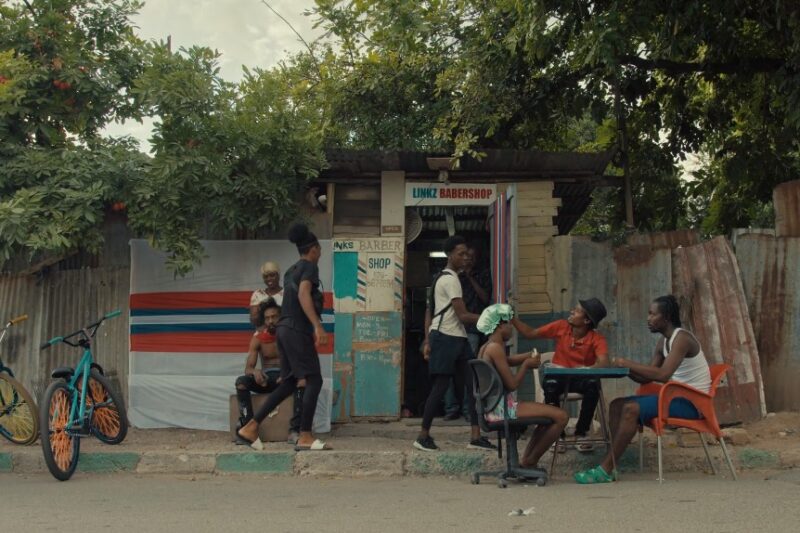
The country’s culture is a fascinating mix of African and French influences, a result of its colonial past and the diverse origins of its people. This blend is evident in various aspects of Haitian life, from language and religion to cuisine and music.
Haitian Creole and French
Haitian Creole, or Kreyòl, is the most widely spoken language in Haiti and is a unique blend of French, African, and other linguistic influences. While French is the official language and is used in formal settings, Haitian Creole is the language of the people and is used in everyday communication.
This linguistic duality reflects the complex history and social dynamics of the country.
Vodou and Catholicism
Religion in Haiti is another area where African and French influences merge. While the majority of Haitians are Roman Catholic, Vodou, an Afro-Caribbean religion, is also widely practiced.
Vodou incorporates elements of traditional African religions and Catholicism, creating a unique spiritual landscape. It played a significant role in Haitian culture and was even a motivating force during the Haitian Revolution.
4. The Citadel Laferrière: A Symbol of Freedom and Resistance
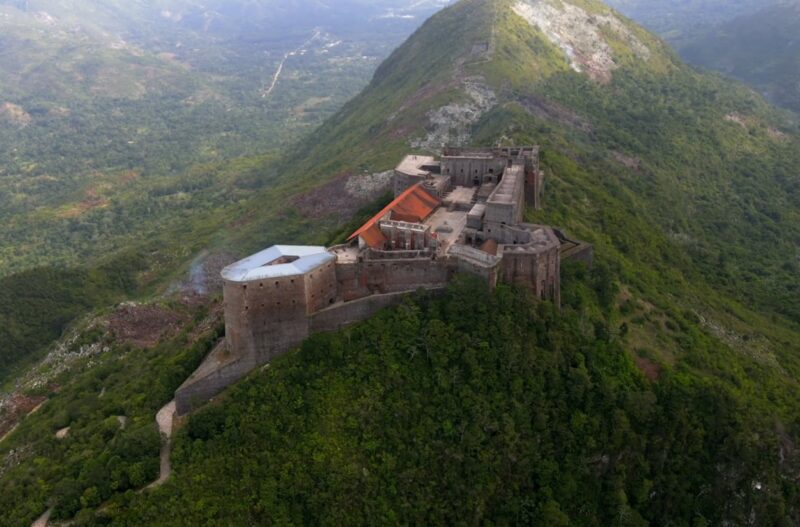
The Citadel Laferrière is one of the most iconic landmarks in the country. Built after the Haitian Revolution, it stands as a symbol of the country’s fight for freedom and its resistance against foreign invasion.
Construction and Purpose
The Citadel was constructed between 1805 and 1820 under the orders of Henri Christophe, one of the leaders of the Haitian Revolution. The fortress was built to protect the newly independent nation from French invasion.
Located atop the Bonnet a L’Eveque mountain, the Citadel is an architectural marvel, built by up to 20,000 workers, and could house up to 5,000 people in times of emergency.
UNESCO World Heritage Site
In 1982, the Citadel was designated as a UNESCO World Heritage Site, along with the nearby Sans-Souci Palace. The Citadel is not just an architectural wonder; it’s a symbol of Haitian resilience and freedom.
Tourists and locals alike visit this historic site to pay homage to the struggles and victories that it represents.
5. Haitian Cuisine as a Melting Pot of Flavors
Haitian cuisine is a delicious blend of African, French, and indigenous Taíno influences. The food is known for its bold flavors, with a generous use of herbs, spices, and pikliz, a spicy pickled vegetable mixture.
Staple Foods and Dishes
Some of the staple foods in Haitian cuisine include rice, beans, and plantains.
Dishes like griot (fried pork), poulet aux noix (chicken with cashews), and soup joumou (pumpkin soup traditionally eaten on New Year’s Day) are popular and reflect the diverse influences that have shaped the food culture.
Street Food and Beverages
Street food is an integral part of Haitian cuisine. From fried plantains to spicy grilled meats, the streets of Haiti offer a variety of quick and delicious options. When it comes to beverages, this country is known for its rum and coffee.
Barbancourt Rum is a well-known brand that has been produced since the 19th century, and Haitian coffee is gaining international recognition for its unique flavor profile.
6. The Importance of Music and Dance
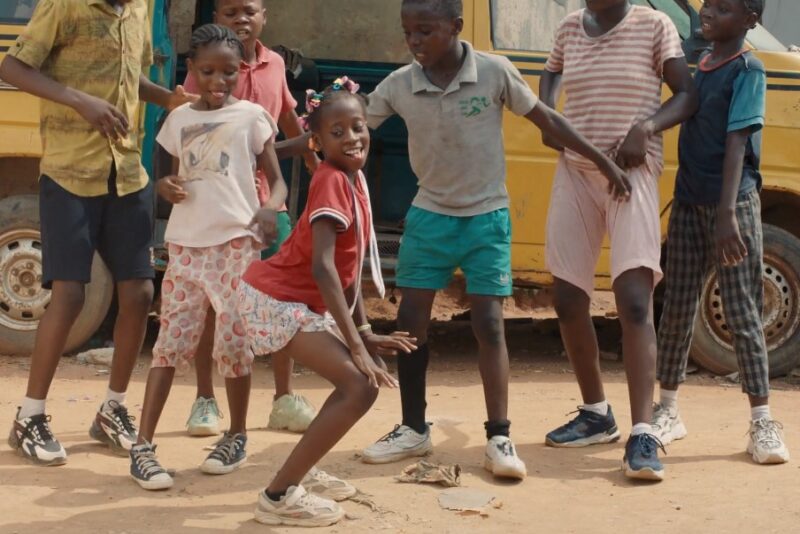
Music and dance are essential aspects of Haitian culture, serving both as forms of entertainment and as expressions of the country’s complex history and diverse influences.
Kompa and Rara
Kompa is a popular music genre in Haiti, characterized by its medium-to-upbeat tempo and its use of brass instruments, keyboards, and guitars. It originated in the 1950s and has African, French, and other Caribbean influences.
Rara is another significant genre, especially during the Lenten season. It combines music and dance in street processions and has roots in both Vodou and Christianity.
Traditional Dances
Traditional dances like Yanvalou, Congo, and Rabòday have African origins and are often performed in religious and cultural ceremonies. These dances are not just artistic expressions but also serve as a connection to Haitian history and spirituality.
They are often accompanied by drumming and singing, creating an immersive experience that tells a story of resilience, joy, and community.
7. The Haitian Flag: A Symbol of Unity and Freedom
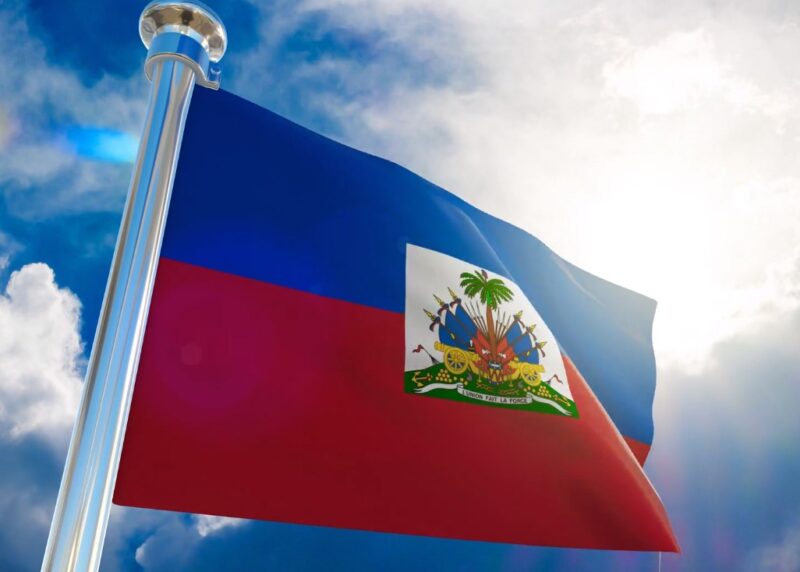
The Haitian flag is a potent symbol of the nation’s history, unity, and struggle for freedom. Adopted on May 18, 1803, the flag has undergone several changes but has always retained its core symbolism.
Design and Meaning
The current design of the flag consists of two horizontal bands of blue and red, with a coat of arms in the center. The blue represents the black Haitians, originally brought as slaves, while the red stands for the gens de couleur, or people of mixed ancestry.
Flag Day
May 18th is celebrated as Flag Day, commemorating the adoption of the flag and the unity it symbolizes. The day is marked with parades, speeches, and other public events.
Schools often hold educational programs to teach children about the significance of the flag and the history of their country.
8. Country’s Contribution to Art
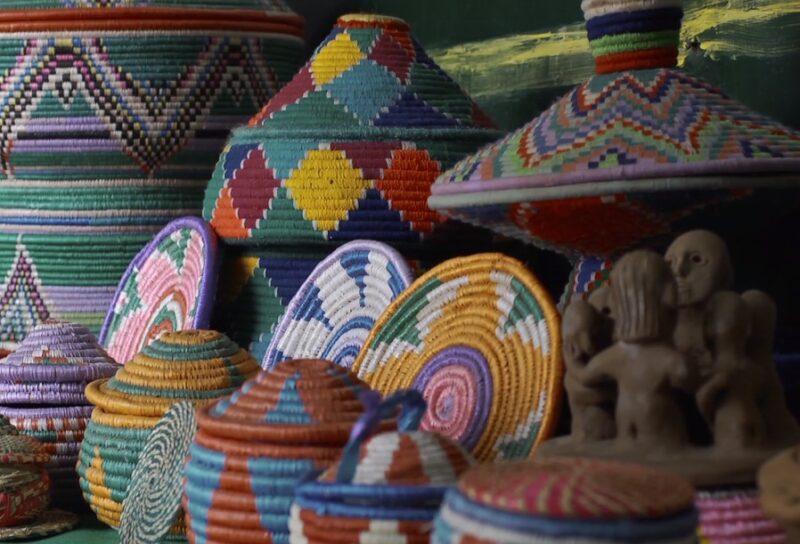
The country has a rich artistic tradition that reflects its diverse cultural influences and complex history. From painting and sculpture to literature, Haitian artists have made significant contributions to the global art scene.
Painting
Haitian painting is known for its vibrant colors, intricate details, and often, depictions of daily life, history, and spirituality. The “naïve” or “primitive” art movement, which gained international attention in the mid-20th century, has its roots in Haiti.
Artists like Hector Hyppolite and Philomé Obin are celebrated for their unique styles that blend realism and symbolism.
Literature and Poetry
Literature is another domain where the country has made a lasting impact. Writers like Jacques Roumain, Edwidge Danticat, and Lyonel Trouillot have explored themes of identity, diaspora, and social justice in their works.
Haitian literature often delves into the complexities of the nation’s history and the resilience of its people, offering a nuanced perspective that goes beyond stereotypes.
9. Haiti’s Environmental Challenges
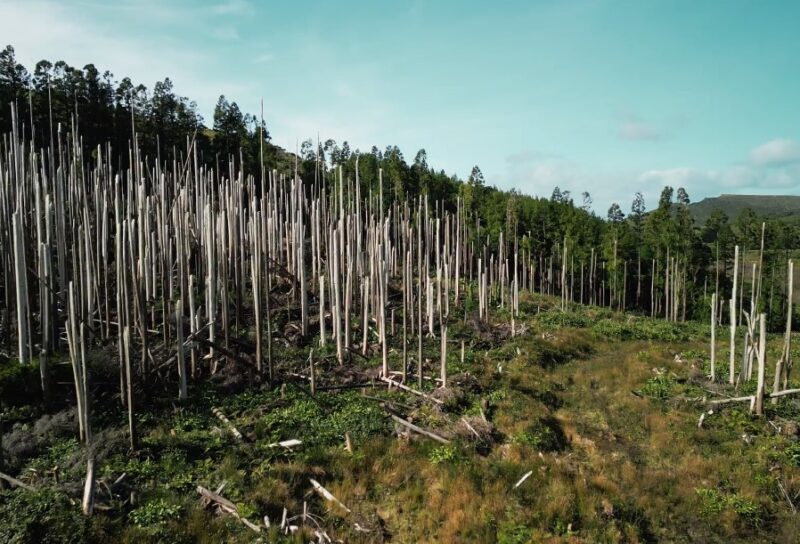
While the country’s natural beauty is undeniable, the country faces severe environmental challenges, including deforestation and soil erosion. These issues have far-reaching implications for the nation’s economy and quality of life.
Deforestation
Haiti has one of the highest rates of deforestation in the world, with estimates suggesting that less than 4% of the original forest cover remains. The primary causes include the use of wood for fuel and unsustainable agricultural practices.
Deforestation has led to soil erosion, reduced agricultural productivity, and increased vulnerability to natural disasters.
Efforts to Combat Environmental Issues
Despite these challenges, there are ongoing efforts to combat environmental degradation in Haiti. Organizations, both local and international, are working on reforestation projects and sustainable agriculture practices.
The government has also taken steps to create protected areas and promote environmental education, although much work remains to be done.
10. The Role of Women in the Society
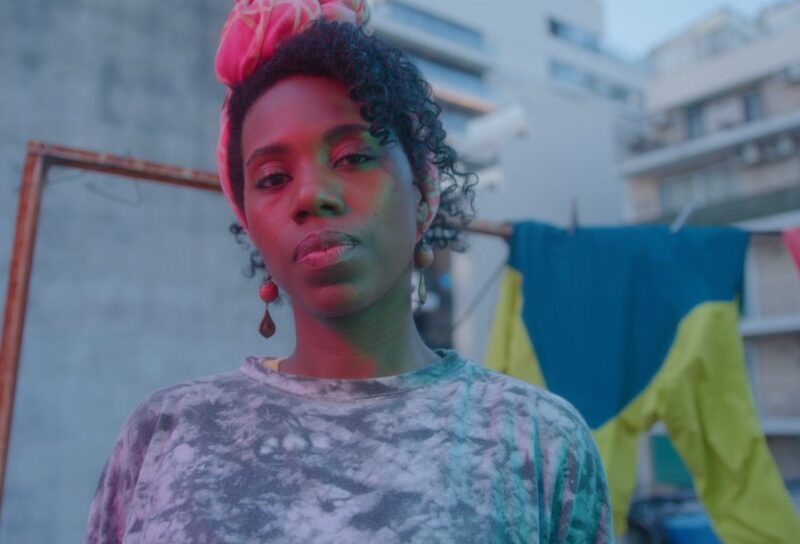
Women play a crucial role in Haitian society, often serving as the backbone of the family and community.
Despite facing numerous challenges, including gender inequality and limited access to education and healthcare, Haitian women have been instrumental in shaping the country’s history and culture.
Women in History and Politics
Haitian women have been active participants in the country’s history, from the Haitian Revolution to the present day. Women like Marie-Jeanne Lamartiniére and Cécile Fatiman played significant roles during the revolution.
In modern times, women have been increasingly involved in politics, although they are still underrepresented. Ertha Pascal-Trouillot served as the provisional President of Haiti in 1990-1991, becoming the first woman to hold this office.
Economic and Social Contributions
Women are often the primary caregivers and breadwinners in Haitian families. They are heavily involved in commerce, particularly in the informal sector, selling goods in markets and streets.
Women also play a vital role in agriculture, often working longer hours than men but with fewer resources. Organizations and initiatives aimed at empowering Haitian women are gradually gaining momentum, recognizing their essential contributions to society.
11. Complex Relationship with the Dominican Republic
The country shares the island of Hispaniola with the Dominican Republic, and their relationship has been complex, marked by periods of tension and cooperation.
Historical Background
The island was divided between the French-controlled Saint-Domingue (now Haiti) and the Spanish-controlled Santo Domingo (now the Dominican Republic) in the late 17th century.
The country occupied the Dominican Republic from 1822 to 1844, a period that still influences relations today. The two countries have had varying degrees of political and economic engagement, often shaped by external factors like international politics and natural disasters.
Current Relations
Today, the relationship between Haiti and the Dominican Republic is a mix of interdependence and tension. Issues like migration, trade, and border security are constant topics of discussion.
While there are economic and cultural exchanges, disparities in development and incidents of discrimination against Haitians in the Dominican Republic continue to strain relations.
12. The Haitian Diaspora
The Haitian diaspora is a significant and influential community, with large populations in countries like the United States, Canada, and France. This diaspora has been shaped by various waves of migration, often driven by political instability and economic hardship in the country.
Reasons for Migration
- Political upheavals, natural disasters, and economic challenges have been the primary drivers of Haitian migration.
- The diaspora began to grow significantly during the Duvalier dictatorships (1957-1986), and later waves were influenced by events like the 2010 earthquake.
- Many Haitians have sought asylum or better economic opportunities abroad.
Impact on the Country
- The diaspora plays a crucial role in Haiti’s economy through remittances, which make up a significant portion of the country’s GDP.
- The diaspora is also involved in social and political initiatives, contributing to development projects and advocating for Haitian issues on the international stage.
- Their influence is a testament to the enduring connections between Haitians at home and abroad.
13. Carnival: Haiti’s Most Vibrant Festival

Carnival is one of the most anticipated and vibrant events in the country, celebrated with parades, music, and elaborate costumes. It’s a festival that brings communities together and showcases the rich cultural tapestry of the nation.
The Celebration
It is a multi-day event that usually takes place in February or March, leading up to Lent. Cities come alive with colorful parades featuring floats, musicians, and dancers in intricate costumes.
The festivities are a blend of African, French, and indigenous traditions, and each region may have its unique way of celebrating.
Significance
Beyond the revelry, Carnival has deep cultural and historical significance. It serves as a platform for social commentary, where musicians and artists often address political and social issues through their performances.
The festival is also a testament to the resilience and spirit of the Haitian people, who continue to celebrate life despite the challenges they face.
14. Coffee Industry
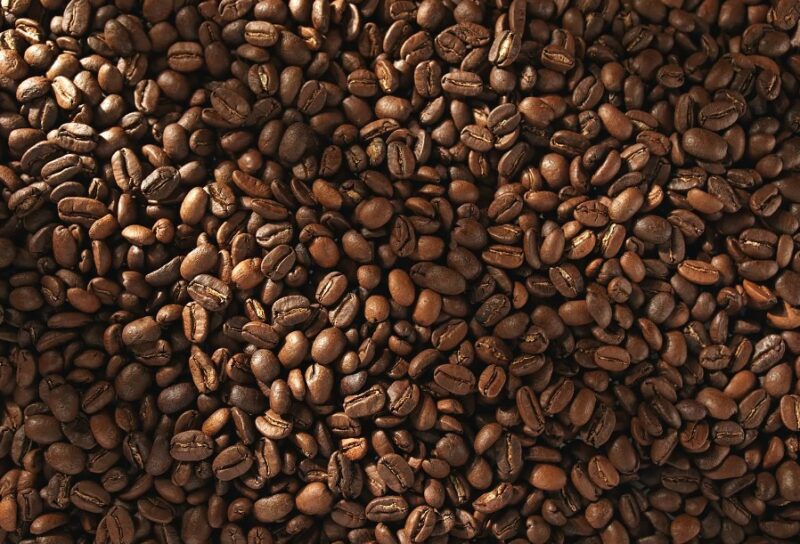
Coffee is one of Haiti’s most important agricultural exports, and the country has a long history of coffee cultivation. However, the industry has faced numerous challenges, including environmental degradation and lack of investment.
History and Decline
Coffee was introduced to the country in the 18th century and quickly became a significant export. At one point, Haiti was responsible for half of the world’s coffee production.
However, political instability, deforestation, and lack of modernization have led to a decline in the industry.
Revival Efforts
In recent years, there have been concerted efforts to revive Haiti’s coffee industry. Organizations and cooperatives are working to promote sustainable farming practices and improve the quality of Haitian coffee.
Specialty Haitian coffee is slowly gaining international recognition, offering a glimmer of hope for the industry’s future.
15. The 2010 Earthquake and Its Aftermath
One of the most devastating events in the country’s recent history was the earthquake that struck on January 12, 2010. The disaster had a profound impact on the country, affecting millions of lives and causing widespread destruction.
The Disaster
The 7.0 magnitude earthquake struck near the capital city of Port-au-Prince, causing immense loss of life and property. Estimates suggest that over 230,000 people were killed, and more than 1.5 million were displaced.
The earthquake also severely damaged infrastructure, including hospitals, schools, and government buildings.
Recovery and Challenges
The recovery process has been slow and fraught with challenges, including political instability and inadequate resources.
International aid and NGOs have played a significant role in relief efforts, but the country still faces ongoing challenges in rebuilding and improving resilience against future disasters.
The earthquake’s impact is a somber reminder of the vulnerabilities that Haiti faces but also a testament to the resilience and spirit of its people.
16. Haitian Folklore and Mythology
Haitian folklore is a rich tapestry of stories, myths, and legends that have been passed down through generations. These tales often serve as moral lessons and are deeply rooted in the country’s diverse cultural influences.
Lwa and Spirits
In Haitian folklore, the Lwa are spirits that serve as intermediaries between humans and the supreme god, Bondye, in the Vodou religion. Each Lwa has its own personality, preferences, and rituals for veneration.
These spirits are often rooted in African, indigenous, and even Catholic traditions, reflecting the syncretic nature of Haitian culture.
Popular Folktales
One of the most popular characters in Haitian folklore are Bouki and Ti Malice, often depicted as naive individuals and a trickster, respectively. Their adventures serve as moral lessons and are a popular subject in Haitian storytelling.
These tales are not just for entertainment; they are a form of cultural preservation and education for younger generations.
17. The Role of NGOs and Aid Organizations

Non-Governmental Organizations (NGOs) and international aid have a significant presence in the country, especially in the wake of natural disasters and political crises.
While these organizations have contributed to relief efforts, their role is often a subject of debate.
Aid and Its Complexities
Haiti is one of the largest recipients of foreign aid in the Western Hemisphere. Organizations have been involved in various sectors, including healthcare, education, and disaster relief.
However, the effectiveness of these interventions is often questioned, with criticisms ranging from lack of coordination to perpetuating dependency.
Local Initiatives
In recent years, there has been a growing emphasis on empowering local organizations and community-led initiatives. The idea is to build sustainable solutions that are rooted in the needs and realities of the Haitian people.
This shift represents a more nuanced approach to aid and development, recognizing the importance of local expertise and ownership.
18. Haitian Currency and Economy
The Haitian Gourde is the currency of the country, and the country’s economy is one of the most challenging aspects of its development. Agriculture, manufacturing, and remittances from the diaspora are significant contributors to the GDP.
Economic Challenges
The country faces numerous economic challenges, including high unemployment, inflation, and a large informal sector. Political instability and natural disasters have also hindered economic growth.
Despite these challenges, the country has a vibrant entrepreneurial spirit, with small businesses and informal vendors playing a crucial role in the economy.
Remittances
As mentioned earlier, remittances from the Haitian diaspora are a significant source of income, making up over 30% of the country’s GDP. These funds are often used for education, healthcare, and daily expenses, providing a vital lifeline for many families.
The importance of remittances highlights the interconnectedness of Haitians at home and abroad.
19. Festivals Beyond Carnival
While Carnival is the most famous, Haiti has a rich calendar of festivals that celebrate its history, culture, and religious traditions. These festivals are an essential part of Haitian life, offering a glimpse into the country’s diverse cultural landscape.
Rara Festival
The Rara Festival is a unique Haitian event that takes place during Lent, leading up to Easter. It’s a blend of music, dance, and Vodou religious practices. Rara bands, consisting of musicians and singers, parade through the streets, attracting followers as they go.
The festival is a mix of celebration and protest, often touching on social and political issues.
Fête Gede
Fête Gede, or the Festival of the Dead, is another significant event in Haiti. Celebrated on November 2nd, it’s a day to honor ancestors and the Lwa of death and resurrection.
The celebrations take place in cemeteries and Vodou temples, featuring rituals, music, and dance. It’s a spiritual event that also serves as a reminder of the cycle of life and death.
20. Haitian Influence in Global Culture
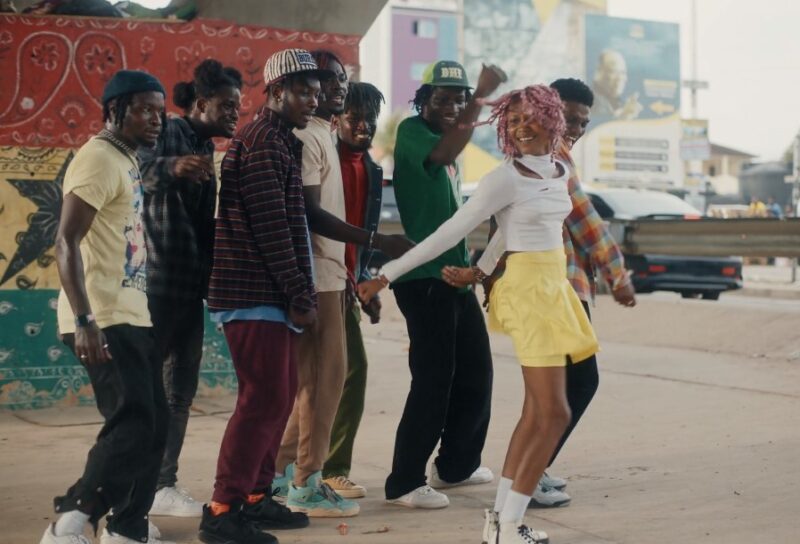
Haiti may be a small country, but its cultural impact is felt worldwide. From music and art to literature and activism, Haitians have contributed significantly to global culture.
Music and Dance
Haitian music genres like Kompa and Zouk have gained international popularity, influencing artists and listeners beyond the Caribbean.
Haitian dance forms, often rooted in African traditions, have also found their way into global dance scenes, enriching the world’s cultural tapestry.
Activism and Thought
The country’s history of resistance and struggle for freedom has inspired activists and thinkers globally. The Haitian Revolution is often cited in discussions about colonialism, race, and human rights.
Haitian intellectuals and activists have contributed to global dialogues on these issues, making a lasting impact.
FAQs:
What is the significance of the Haitian coat of arms?
The Haitian coat of arms, found at the center of the national flag, features a variety of symbols including cannons, flags, and a Phrygian cap, which is a symbol of freedom. The coat of arms also includes a palm tree and the motto “L’Union Fait La Force” (“Unity Makes Strength”).
While the coat of arms reflects the country’s history of struggle for freedom, it also emphasizes the importance of unity in the face of adversity.
Are there any indigenous communities left in the country?
The indigenous Taíno population was largely decimated following the arrival of European colonizers. Today, there are no recognized indigenous Taíno communities left in Haiti.
However, the influence of the Taíno culture is still present in various aspects of Haitian life, including some words in the Haitian Creole language and aspects of folklore.
What is the role of drumming in their music and culture?
Drumming holds a special place in Haitian music and culture, especially in traditional and religious settings. In Vodou ceremonies, for example, drumming is used to call upon the Lwa (spirits) and to facilitate possession trances.
Different rhythms correspond to different Lwa, making drumming an intricate and essential part of the ritual.
How is Creole different from French?
While Haitian Creole (Kreyòl) has a lot of vocabulary derived from French, it is a distinct language with its own grammar and syntax. It also incorporates elements from African languages and other sources.
Unlike French, which is often associated with formal education and official matters in Haiti, Creole is the language of everyday life for the majority of Haitians.
What are some traditional Haitian crafts?
Haiti is known for its vibrant arts and crafts scene, which includes metalwork, beadwork, and painting. Metal artisans often use recycled materials like oil drums to create intricate wall hangings and sculptures.
Beadwork is commonly used in Vodou flags and ceremonial attire. The country is also known for its “naïve” or “primitive” art, a form of painting that gained international recognition in the mid-20th century.
The Bottom Line
Haiti is a land of contrasts, a place where challenges and beauty coexist. Its history is a tale of resilience, its culture a vibrant blend of influences, and its people a testament to the enduring human spirit.
While the country faces numerous challenges, it also offers lessons in courage, community, and the transformative power of culture. We’ve only scratched the surface of what makes Haiti a fascinating study in complexity and resilience.
Whether you’re a history buff, a cultural enthusiast, or someone interested in global affairs, this country has something to offer to you and you’ll be amazed!
